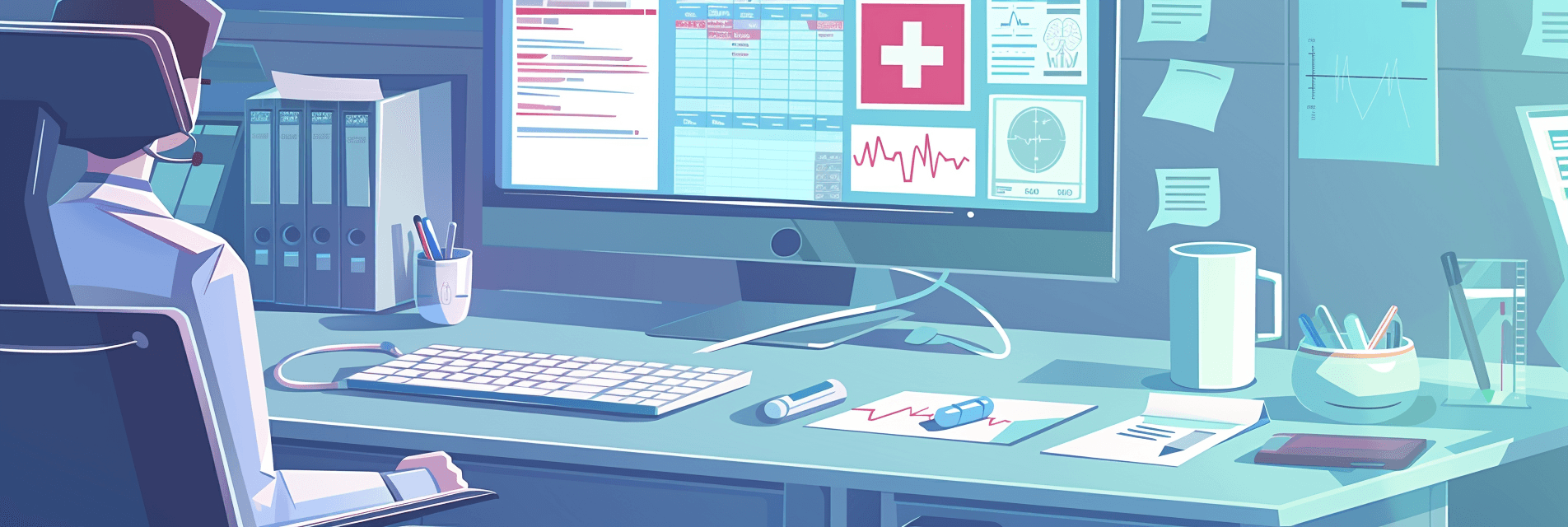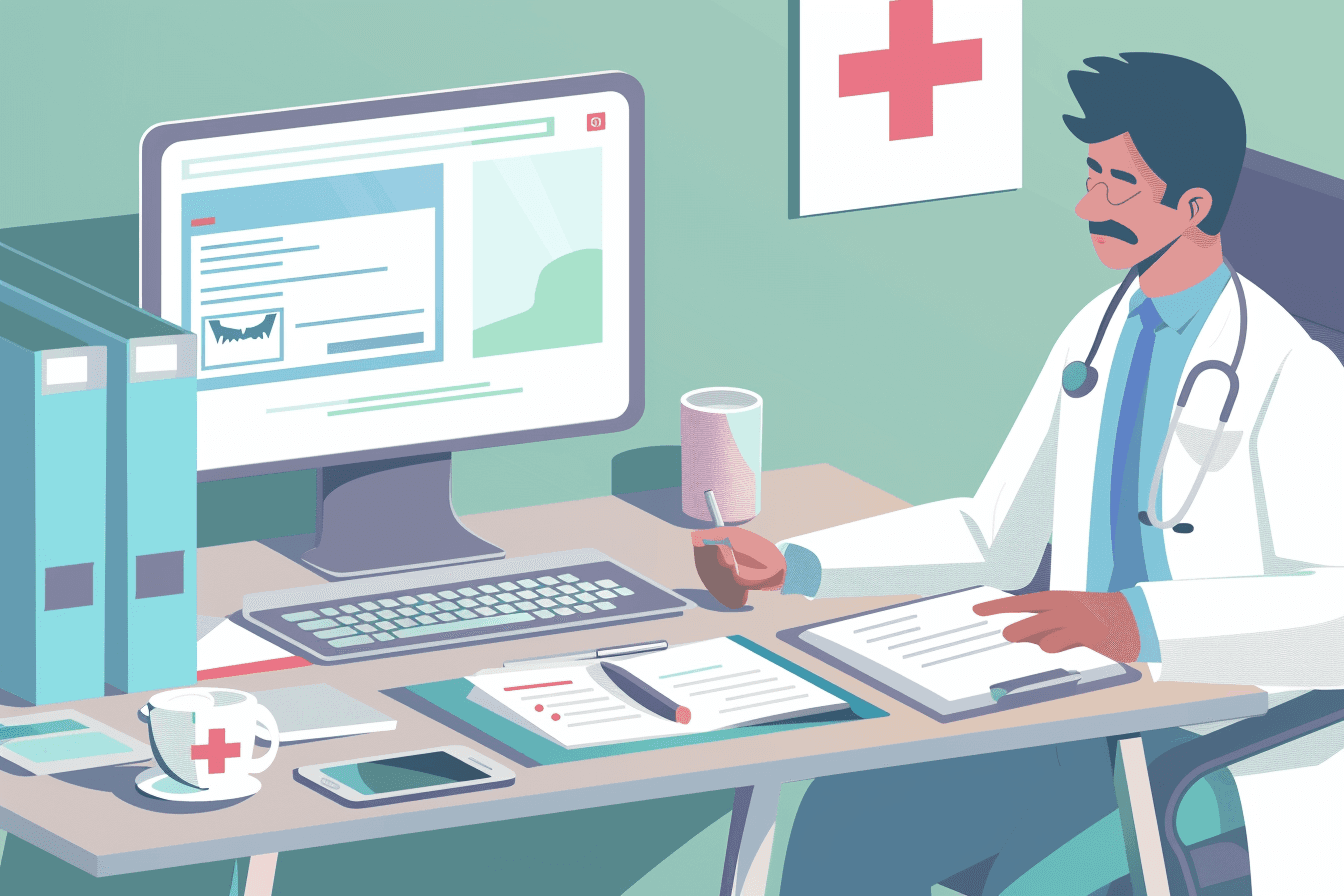How are EMR’s evolving?
From Paper to Digital: The Initial Leap
The initial evolution of EMRs was the transition from paper-based records to digital formats. This shift not only saved physical space but also made it easier to organize and retrieve patient information. However, the early versions of EMRs were often clunky and not very user-friendly, leading to a slow adoption rate among healthcare providers.
Interoperability and Integration
A significant step in the evolution of EMRs has been the focus on interoperability and integration. Initially, different EMR systems could not communicate with each other, leading to fragmented patient records and inefficiencies in healthcare delivery. However, with the development of standards like Health Level 7 (HL7) and Fast Healthcare Interoperability Resources (FHIR), EMRs can now exchange data more seamlessly. This has been crucial in creating a more connected healthcare ecosystem where patient information can be shared across different providers and systems.
Patient-Centered Design
Another important evolution in EMRs has been the shift towards a more patient-centered design. Early EMR systems were primarily designed for administrative and billing purposes, with little consideration for clinical workflows or patient engagement. However, modern EMRs are increasingly incorporating features that enhance the patient experience, such as patient portals where individuals can access their health records, schedule appointments, and communicate with their healthcare providers.
Artificial Intelligence and Predictive Analytics
The integration of artificial intelligence (AI) and predictive analytics into EMRs is perhaps one of the most exciting evolutions. AI algorithms can analyze vast amounts of data to identify patterns and predict outcomes, which can be used to support clinical decision-making. For example, AI can help identify patients at risk of chronic diseases or readmission, enabling healthcare providers to intervene proactively. Additionally, natural language processing (NLP) technologies are being used to extract meaningful information from unstructured data in EMRs, further enhancing their utility.
Telehealth and Remote Monitoring
The COVID-19 pandemic accelerated the adoption of telehealth, and EMRs have evolved to support this shift. Many EMR systems now integrate telehealth functionalities, allowing healthcare providers to conduct virtual consultations and access patient records remotely. Furthermore, the integration of remote monitoring devices with EMRs has enabled continuous monitoring of patients’ health outside of traditional healthcare settings, leading to more personalized and proactive care.
The Road Ahead
The evolution of EMRs is far from over. Future developments may include more advanced AI capabilities, further integration with wearable technology, and even more sophisticated data analytics tools. Additionally, as concerns about data privacy and security continue to grow, the next generation of EMRs will likely place an even greater emphasis on protecting patient information.

How are Dictation Software’s evolving?
The Early Days of Dictation Software
The genesis of dictation software can be traced back to the early days of computing when speech recognition technology was in its nascent stage. The initial versions were rudimentary, requiring users to speak slowly and distinctly, often resulting in inaccurate transcriptions. These early iterations were limited in vocabulary and struggled with accents and background noise, making them impractical for widespread use.
The Advent of Machine Learning and AI
The game-changer for dictation software came with the advent of machine learning and artificial intelligence (AI). These technologies enabled the software to learn from its mistakes, adapt to the user’s voice, and improve accuracy over time. Today’s dictation software can understand natural language, recognize different accents, and filter out background noise, making it more versatile and reliable than ever before. Although not 100% accurate a far step in the right direction.
Integration with Other Technologies
One of the most significant evolutions in dictation software is its integration with other technologies. It is now commonly embedded in smartphones, virtual assistants, and various applications, allowing users to dictate text messages, emails, and even control smart devices with their voice. This seamless integration has made dictation software an indispensable tool in both personal and professional settings.
Specialized Applications in Industry
Dictation software has found specialized applications in various industries, particularly in healthcare and law. In healthcare, it is used for creating patient records, thereby reducing the administrative burden on medical professionals and allowing them to focus more on patient care. In the legal field, it aids in the transcription of legal documents and court proceedings, enhancing efficiency and accuracy.
The Future of Medical Dictation Software
The future of dictation software looks promising, with advancements in AI and machine learning continuing to push the boundaries of what is possible. We can expect even more accurate transcription, real-time translation capabilities, and deeper integration with other technologies. As voice interfaces become more prevalent, dictation software will play a crucial role in shaping the way we interact with our devices and each other.

What are AI Medical Scribe’s and what are there newly created roles?
An AI medical scribe acts as a revolutionary aide for healthcare professionals, simplifying the documentation task during patient interactions. It attentively captures the conversation between the healthcare provider and the patient, subsequently arranging the data into a well-structured medical note. By mechanizing the process of note-taking, an AI medical scribe boosts efficiency and enables practitioners to concentrate more on delivering patient care.
Why Choose Simplify?
At Simplify, our core commitment is to revolutionize documentation processes, empowering practitioners to focus on what truly matters. We understand the dedication your profession demands and the burden of time-consuming documentation that can lead to burnout. Our mission is to transform this narrative. Our suite is meticulously crafted to save you time and alleviate the stress of documentation, allowing you to concentrate on the essence of your practice.
What sets us apart?
-Customizable and easy to use built upon giving you the most freedom to how you create your notes.
-Built to be cross-platform, use Simplify on the go through our mobile app or on your desktop.
-Built to support all practice types and numerous note types.
-HIPAA complaint
-Simplify’s custom speech-to-text API is trained on 98,000+ medical terms
-Simplify easily integrates into any EHR with our simple and easy-to-use dashboard
-Trained on Level V encounters

How is Simplify used?
- You either has Simplify live listen to a patient conversation or briefly dictate a patient encounter
- Simplify takes the data given to it, and generates a note customized to the patient encounter alongside suggested ICD-10 and CPT codes
- You review and make edits as needed to the outputted note by Simplify
- Easily integrate the reviewed and edited note into your EHR and billing forms
Legal Disclaimer: **We provide general information only, not billing, coding, or medical advice. We do not guarantee the accuracy of the suggested codes or material generated by Simplify or that the use of such codes or material will result in payment or reimbursement or that they will be accurate in anyway. The platform is not a substitute for billing and coding advice from qualified billers and codding experts.
